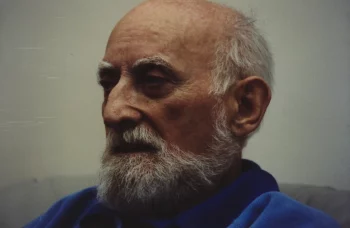A small, postcard-sized panel painting held at Oxford’s Ashmolean Museum for decades has been determined to be from the Rembrandt workshop. The painting was long thought to be at worst, a forged Rembrandt, and at best, a later artist copying the Old Master’s style, but recent testing has disproved this long-held belief. Tomorrow, the painting, entitled Head of a Bearded Man, will be added to the museum’s “Young Rembrandt” exhibition to be shown alongside other works by the renowned painter.
The painting came to the Ashmolean in 1951 and was initially labelled as an early Rembrandt as a 1777 catalogue label still stuck to the verso of the painting indicated that the work was by the Dutch painter. However, in 1982, the Rembrandt Research Project viewed the artwork and determined it to be a much later a copy or perhaps even a fake. The work was moved into the museum’s stores and was more or less ignored. “No one wanted to talk about [the painting] because it was this fake Rembrandt,” An Van Camp, curator of northern European art for the Ashmolean, told The Guardian.
Van Camp, who joined the museum in 2015, saw her opportunity to reconsider the neglected painting when she was asked to assist in organising “Young Rembrandt.” To do so, the museum turned to Peter Klein, a leading specialist in a scientific method for dating trees known as Dendrochronology, to assess the painting’s wooden substrate. Klein’s work discovered that the wood panel used for Head of a Bearded Man matched the wood panels used for Rembrandt’s Andromeda Chained to the Rocks as well as Jan Lievens’ Portrait of Rembrandt’s Mother. Each of the wood panels were from a Baltic region oak tree felled sometime between 1618 and 1628. “Allowing a minimum of two years for the seasoning of the wood,” Klein stated, “we can firmly date the portrait to 1620-30.”
“It is what Rembrandt does. He does these tiny head studies of old men with forlorn, melancholic, pensive looks. It is very typical of what Rembrandt does in Leiden around 1630,” continued Van Camp. “It is very exciting. It is bringing the painting back in the fold.”
Although work on Head of a Bearded Man is far from complete, Klein’s dating of the panel and its match to that of another work by Rembrandt and his friend Lievens, strongly suggests the painting was at least created by Rembrandt’s workshop. Research will continue with the hopes of better understanding its origins.
Earlier this year, another Rembrandt was “discovered” when the Allentown Art Museum sent their Portrait of a Young Woman, then attributed to Rembrandt’s studio, to be cleaned and it was returned having been confirmed as a work by the artist, himself.
“Young Rembrandt” began its run in February of this year, but the looming pandemic forced the museum to close temporarily leaving the exhibition in limbo. The Ashmolean was able to work with lenders to see the exhibition through this autumn. “Young Rembrandt” focuses on the formative years as an artist, from 1624 through 1634, and features over 30 paintings by Rembrandt alongside 10 works by some of the artist’s most notable contemporaries and 90 more drawings.
“Young Rembrandt” opened at the Ashmolean Museum on August 10th and will run through November 1st, 2020.







